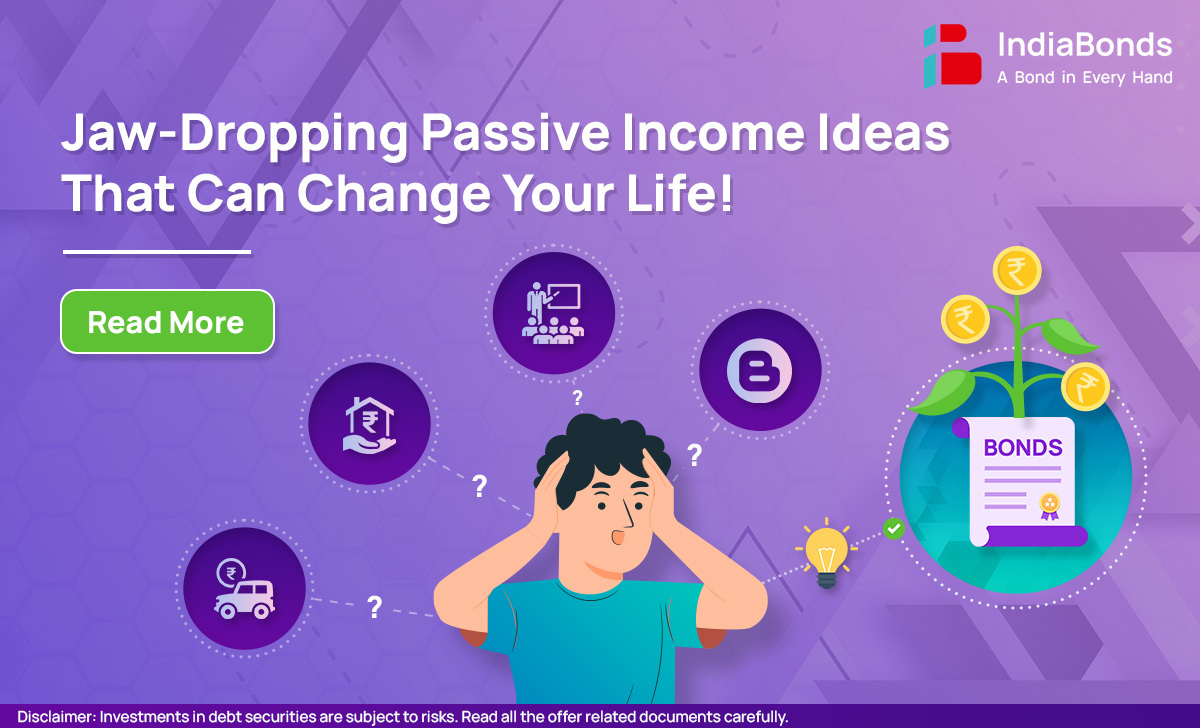Jaw-Dropping Passive Income Ideas That Can Change your Life!

Show me the money!
Seeking an escape from the 9-5 grind? Aspiring to leave the rat race?
Want to become the part of the Financially Independent Retire Early (F.I.R.E) movement?
Your quest for passive income ideas concludes here. Let’s get straight to the point; here are the top passive income ideas for 2023:
- Launch a dropshipping business
- Create an online course
- Sell digital products
- Explore affiliate marketing
- Start a blog
And so forth. Typically, when you Google ‘how to make passive income’, you encounter such type of enticing listicles. However, many of these options are, in fact, forms of active or pseudo active income. The underlying question remains: do these examples truly qualify as passive income? Most necessitate some level of effort or ‘active work’ before generating income, thereby blurring the line between passive and active income sources. One must also contemplate the sustainability of passive income derived from these sources and critically assess their understanding of the concept.
Apologies for the clickbait title, but it’s essential to shed light on a different perspective regarding passive income. In this article, we’ll delve into the concept of passive income and explore unconventional (rather conventional) methods of earning it, often overlooked by mainstream ‘fin-fluencers’.
IndiaBonds offers a unique take on passive income ideas, providing a fresh perspective on this financial pursuit. Read on to gain a new insight into the domain of passive income.
What the heck is passive Income?
According to Investopedia, passive income, also known as unearned income by the Internal Revenue Service (IRS), refers to income that requires minimal effort to obtain and stands in contrast to active income, derived from employment or business ventures that demand active participation.
Let’s consider the popular example of dropshipping:
Dropshipping is like running an online store without keeping products in stock. When a customer orders something from your online store, the item is sent directly from the supplier to the customer. You make money from the price difference. It’s not completely hands-off, though, as you need to manage the business. Although it enables business operations without inventory management, it is not entirely hands-off. Successful dropshipping necessitates continuous efforts in areas such as marketing, customer service, and finding reliable suppliers. Moreover, market trends evolve, requiring businesses to adapt product offerings, demanding ongoing active involvement. Therefore, dropshipping falls more in the realm of pseudo active income rather than being completely passive.
The issue lies in the loose use of the term “passive income,” which has led to confusion, especially in relation to entrepreneurship. Many options categorized as passive income entail elements of entrepreneurship. In its simplest terms, entrepreneurship involves creating value through a product or service and then monetizing that value. On the other hand, true passive income involve contributing to existing value and earning by benefiting from the derived value, without actively participating in its creation.
The Fin-fluencer Dilemma
Social media gave rise to fin-fluencers, who subsequently became the torchbearers of the Financially Independent Retire Early (F.I.R.E) movement. While there’s nothing inherently wrong with pursuing financial independence, the way it’s often portrayed, particularly in the context of early retirement, might not be ideal. Retiring early can be a noble goal, but the approach advocated by these fin-fluencers, emphasizing multiple passive income streams, is fundamentally flawed.
Their favorite content pillar revolves around the narrative of “Do you know how many sources of income Elon Musk has?” This clickbait often lures unsuspecting viewers. However, what many fail to grasp is that Elon Musk initially focused on one income source during his early struggles. Only after stabilizing his primary income did he venture into other investments. Musk didn’t start his career by googling ‘how to retire by 30 through 10 passive income sources’. Investors and followers of these fin-fluencers often invest their time, energy, and resources in experimenting numerous income streams, only to fail in each, consequently impacting their primary ‘Active’ Income.
Passive Income for Realists
Suppose you own a beach property in Goa. You visit occasionally, but when unoccupied, maintaining it becomes costly. To offset expenses, you consider listing it on Airbnb, generating passive income effortlessly. This epitomizes true passive income, earning with minimal or no effort. Real estate is a quintessential example of passive income, but yields only 2-3%. Yet, an often overlooked asset class with substantial passive income potential is ‘Bonds.’




Bonds: The Paragon of Passive Income
Imagine this: you, the investor, extend a loan to a government or a corporation by purchasing a bond. They promise to repay the loan amount and give you timely interest payments. This financial symbiosis provides a steady stream of income without demanding constant vigilance or active participation. Here lies the beauty of bonds – they offer a predictable, low-risk income stream that flows effortlessly into your pocket, requiring minimal effort on your part.
The allure of passive income is not just about the monetary benefits; it’s the freedom it brings. Bonds, with their assured returns, liberate you from the constant anxiety associated with volatile markets. While others might be nervously watching stock tickers, you, the astute bond investor, can enjoy a cup of coffee, knowing that your income is steadily accruing, irrespective of market gyrations.
Furthermore, bonds often come with a fixed maturity date, making them a beacon of financial planning. Whether you’re saving for your child’s education, planning your dream vacation, or building a retirement nest egg, bonds offer a reliable timeline for your financial goals. Their stability allows you to map out your future with confidence, knowing that your passive income source is secure and dependable.
The passive income from bonds isn’t just a testament to financial acumen; it’s a testament to patience and prudence. By investing in bonds, you are not just earning money; you are nurturing your wealth in a calm and calculated manner. It’s like planting a tree whose branches will shield you from the harsh sun of financial uncertainties, and whose fruits will sweeten your life with the joy of financial freedom.
Conclusion
In the quest for passive income, it’s crucial to distinguish between the real deal and the enticing mirage. The conventional methods often glorified on social media might not always align with the true essence of passive income. The shift from active income to passive income is not an overnight leap but rather a strategic progression. Bonds, standing as the pioneer of passive income, exemplify this transition seamlessly. They offer a serene path toward financial stability, where your money works diligently without demanding your constant attention.
In the grand tapestry of investment options, bonds emerge as a masterpiece, weaving together the threads of stability, reliability, and passive income. They are not merely assets; they are silent allies, working tirelessly to ensure your financial well-being. So, if you seek a legit source of passive income that offers peace of mind along with prosperity, bonds beckon, whispering the promise of a future where your money works for you, effortlessly and endlessly.
FAQs
Q: What are the benefits of passive income in the long term?
A: Passive income offers financial stability and freedom, allowing individuals to build wealth, save for retirement, and achieve financial goals without daily involvement. In the long term, it acts as a reliable source of income, fostering financial security and independence.
Q: How does passive income contribute to wealth creation in the long run?
A: Passive income acts as a catalyst for wealth creation by allowing individuals to reinvest earnings, diversify portfolios, and explore new opportunities. It compounds over time, significantly augmenting one’s financial wealth and stability in the long term.
Disclaimer: Investments in debt securities/ municipal debt securities/ securitised debt instruments are subject to risks including delay and/ or default in payment. Read all the offer related documents carefully..



















































